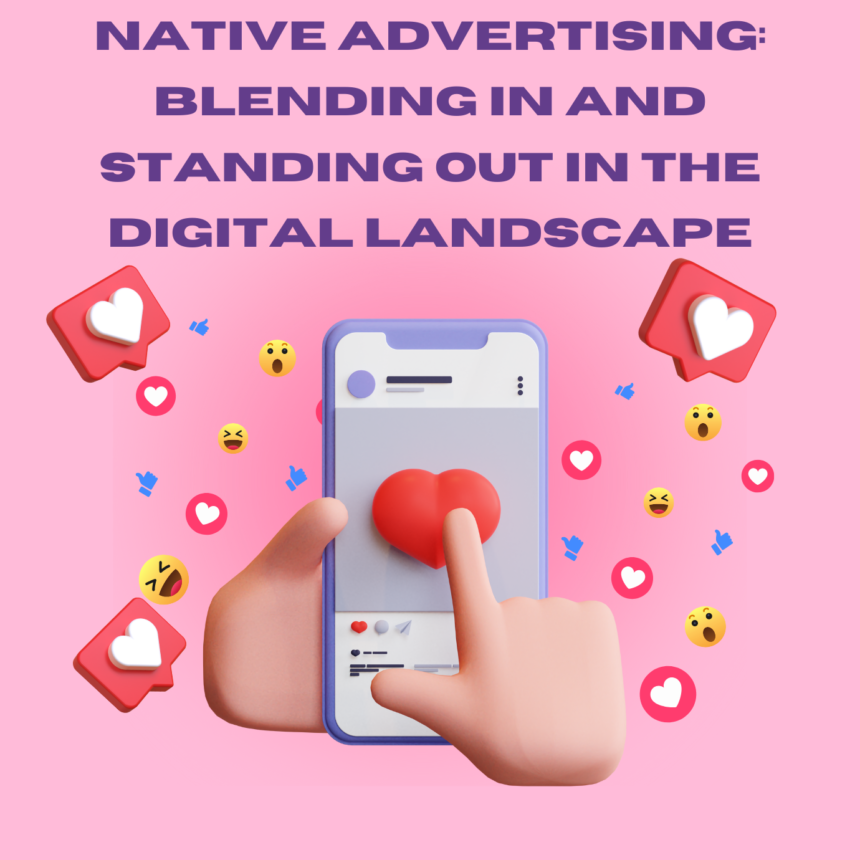Native advertising is a form of online advertising that blends in seamlessly with the surrounding content, providing a non-disruptive and engaging user experience. It aims to deliver relevant and valuable content to users while still achieving advertising objectives. Here are some key insights and strategies for leveraging native advertising effectively:
1. Understanding Native Advertising: Native advertising matches the look, feel, and format of the platform it appears on, making it less intrusive and more integrated with the user experience. It can take various forms, such as sponsored articles, promoted videos, branded content, or in-feed ads.
2. Aligning with the Platform: Native ads should align with the style and context of the platform on which they are displayed. Study the platform’s design elements, content format, and audience preferences to create native ads that seamlessly fit within the user experience.
3. Valuable and Relevant Content: Native ads should offer value to users by providing relevant and helpful content. Focus on creating high-quality content that informs, educates, entertains, or solves a problem for the target audience. This approach enhances engagement and builds trust with users.
4. Transparency and Disclosure: Ensure transparency by clearly labeling native ads as sponsored or promoted content. Transparent disclosure helps maintain trust with the audience and avoids confusion about the nature of the content. Compliance with advertising regulations and guidelines is crucial.
5. Targeted Placement: Identify the most suitable platforms and publishers for your native ads based on your target audience’s preferences and behaviors. Choose platforms that align with your industry, audience demographics, and content context to maximize relevancy and engagement.
6. Adapting to the Format: Tailor your ad content to match the format and style of the native ad placement. Customize the visuals, headlines, and copy to fit seamlessly into the surrounding content while still conveying your brand message effectively.
7. A/B Testing: Experiment with different variations of your native ads to optimize performance. Test various headlines, visuals, and call-to-action elements to identify the most effective combinations. A/B testing allows you to make data-driven decisions and refine your native ad strategy.
8. Tracking and Analytics: Implement tracking mechanisms to measure the performance of your native ads. Monitor key metrics such as click-through rates (CTR), engagement rates, conversion rates, and return on investment (ROI). Leverage analytics to gain insights into user behavior and optimize your campaigns accordingly.
9. Collaboration with Publishers: Build relationships with publishers who specialize in native advertising. Collaborate with them to create compelling native ad campaigns that align with their audience and platform. Publishers can provide valuable insights and help you optimize your native ads for better results.
10. Continuous Optimization: Continuously analyze the performance of your native ad campaigns and make data-driven optimizations. Monitor the metrics, gather feedback, and refine your content, targeting, and placement strategies. By continuously optimizing your native ads, you can improve engagement, conversions, and overall campaign effectiveness.
Native advertising presents an opportunity to reach and engage audiences in a more seamless and contextual manner. By focusing on valuable content, aligning with the platform, and optimizing your campaigns, you can effectively blend in and stand out in the digital landscape while achieving your advertising goals.
